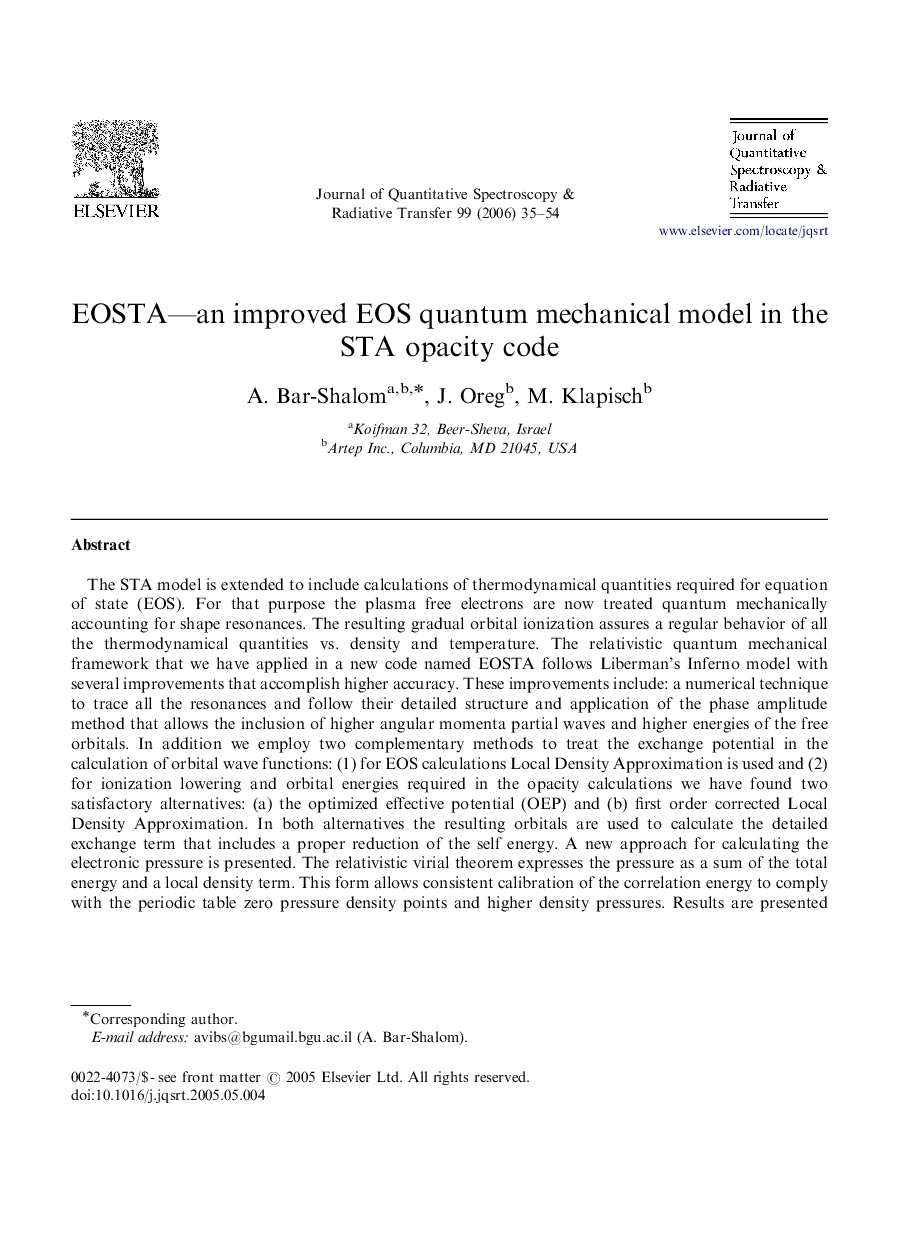| Article ID | Journal | Published Year | Pages | File Type |
|---|---|---|---|---|
| 5431081 | Journal of Quantitative Spectroscopy and Radiative Transfer | 2006 | 20 Pages |
The STA model is extended to include calculations of thermodynamical quantities required for equation of state (EOS). For that purpose the plasma free electrons are now treated quantum mechanically accounting for shape resonances. The resulting gradual orbital ionization assures a regular behavior of all the thermodynamical quantities vs. density and temperature. The relativistic quantum mechanical framework that we have applied in a new code named EOSTA follows Liberman's Inferno model with several improvements that accomplish higher accuracy. These improvements include: a numerical technique to trace all the resonances and follow their detailed structure and application of the phase amplitude method that allows the inclusion of higher angular momenta partial waves and higher energies of the free orbitals. In addition we employ two complementary methods to treat the exchange potential in the calculation of orbital wave functions: (1) for EOS calculations Local Density Approximation is used and (2) for ionization lowering and orbital energies required in the opacity calculations we have found two satisfactory alternatives: (a) the optimized effective potential (OEP) and (b) first order corrected Local Density Approximation. In both alternatives the resulting orbitals are used to calculate the detailed exchange term that includes a proper reduction of the self energy. A new approach for calculating the electronic pressure is presented. The relativistic virial theorem expresses the pressure as a sum of the total energy and a local density term. This form allows consistent calibration of the correlation energy to comply with the periodic table zero pressure density points and higher density pressures. Results are presented describing the various thermodynamical quantities vs. density and temperature in comparison with other calculations and experiments.
